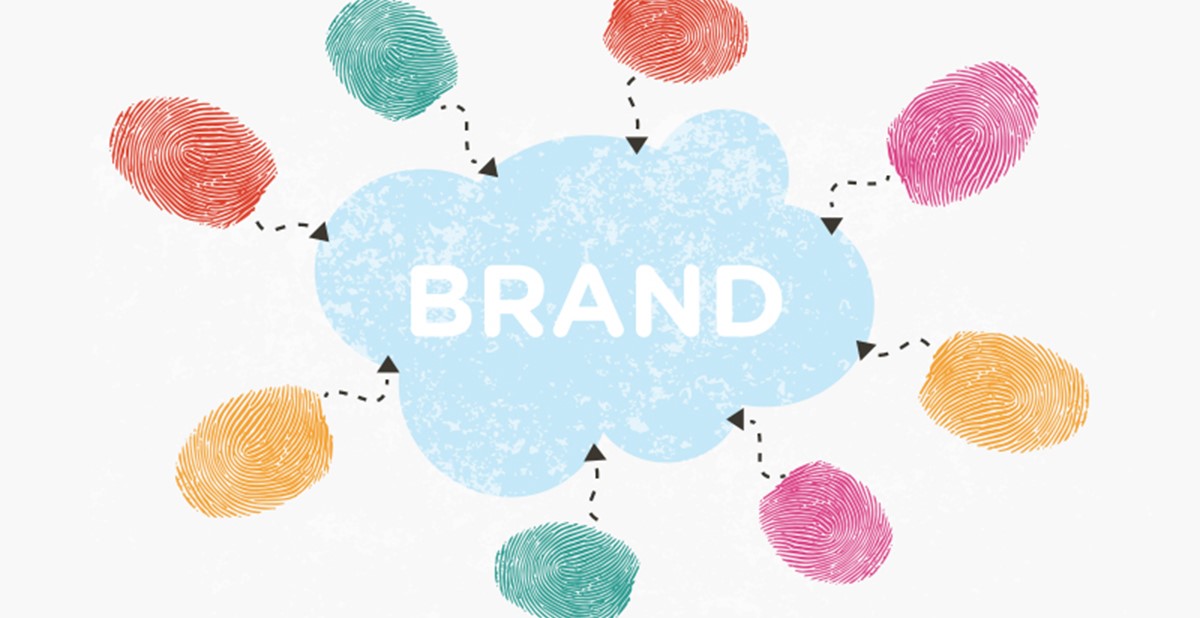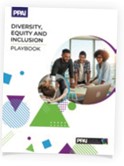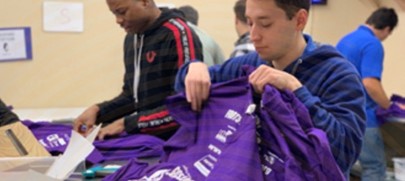Build Your Brand. Shape Your Community.

Third in a three-part series
When the values of a company align with the values of its employees, a stronger sense of loyalty develops. This alignment is crucial because people want to work for companies they believe in. Many believe this is characteristic of the next generation: the growing phenomenon of people searching for purpose and meaning in the work they choose to do.
Arguably, finding purpose in work is truly a natural characteristic of human behavior, regardless of age. Humans search for meaning and purpose in most things they choose to dedicate their time to. While the sources of these may look different for everyone, it doesn’t hurt to also find it in the place where we spend at least one-third of the day, five days a week: our jobs. It produces a sense of pride and contributes to a person’s level of job satisfaction and engagement, resulting in increased employee retention.
Similarly, when customers identify with the values of a company, they develop greater loyalty when purchasing products. For example, there is a growing desire among consumers to support companies that are socially and environmentally responsible. Think of companies with giveback models like TOMS shoes, Cotopaxi and Two Blind Brothers. This is also evident in the midst of the COVID-19 pandemic—people take note of the companies that are doing good, giving back, supporting frontline workers and making their best efforts to care for their employees. They do well by doing good.
The COVID-19 pandemic is also a defining moment that will shape the way that Generation Z engages with work and finances. As the world navigates its way through the economic impact of the pandemic, older members of Generation Z are entering their 20’s and experiencing job scarcity and financial instability, which may translate long-term into conservative saving and spending patterns. Combined with their socially and environmentally responsible values, Generation Z will be much more judicious when evaluating the companies they spend their money with. Your company’s values and reputation could be the difference in winning their business.
What can you do today to attract the right attention from the market and recruit the right employees into your organization?
The first article in this three-part series in the April issue, “Think Beyond Diversity. Focus On Company Culture,” established that diversity acknowledges that we all have differences, which makes every human being uniquely different. Inclusion is the cultivation of an environment where every person feels welcome, and equity says that each person must be given what they need to succeed. It also challenged readers to go beyond diversity to focus on company culture and walked through the process of assessing, defining and establishing a company culture.
The second article in this series in the May issue, “Empower Your People To Thrive,” discussed the idea that your business succeeds when your employees succeed. It walked readers through the process of assessing and building a healthy, inclusive workplace that engages current employees and empowers them to flourish. Introducing the ARTS of diversity, equity and inclusion, the article focused on the internally facing ARTS categories to train and sustain current employees.
The hard work of establishing your company’s culture and training and sustaining your current employees results in a healthier organization. Having done the internal work, now turn your attention outward by focusing on the externally facing ARTS categories to attract the community and recruit new employees. This brings new business and new hires into the organization.
Review the current strategies you have in place to do this. How does each strategy impact the organization? Is each strategy producing desirable results?
As you review your answers to these questions, what areas need attention, correction, adjustment or enhancement? In some cases, it may make sense to identify a new strategy to implement. In other cases, it may be more important to address a strategy that is already in place. To help you prioritize your focus areas, ask a few questions:
- What is the community’s level of awareness of my company?
- What is my company’s reputation in the local community or market?
- In what areas could the organization benefit from increased demographic, experiential or cognitive diversity?
- What positions are vacant, need to change or should be created to better accomplish the organization’s goals?
- What are the positions that are difficult to fill? Why?
–––––––––––––––––––––––––––––––––––––––––––––––––––––––––––
![]()
Your company’s reputation in the community and marketplace is important. If you have a reputation as a great place to work, you will attract potential employees. The more potential employees you attract, the greater likelihood of having a pool of prospective employees with diverse and colorful backgrounds to interview the next time there is a vacancy. If your company is known for being involved in the local community, focusing on sustainability or any other desirable social cause, you will attract potential customers and fans. The more a company is involved, the greater likelihood there is for the company to gain additional exposure and, consequently, to attract more customers and fans in the future.
Here are a few strategies to consider:
- Tell the story of your business through short videos, testimonials, blogs, etc.
- Develop your social media presence
- Connect with the community by supporting nonprofits, local events, etc.
- Partner with local schools and colleges to educate and employ the next generation
–––––––––––––––––––––––––––––––––––––––––––––––––––––––––––
![]()
Recruiting a diverse workforce does not mean hiring someone because of their demographic diversity. It is not about checking a box to say that your company employs people who reflect a variety of races, ethnicities, religions, abilities or any other demographic diversities. Hiring should always be about finding people with the right skills, behaviors and potential for your business. In addition, look for people whose values align with your company’s values.
Here are a few strategies to consider:
- Build a diverse management team
- Evaluate the language in your job descriptions to minimize bias
- Ask employees for referrals
- Adopt a blind recruitment process
- Define your interview process and diversify your pool of interviewers
- Post job openings in a variety of networks, media and publications
By no means is this a message to fire people on your team and replace them with “more diverse” people. Rather, when a new position becomes available, how might you search for new candidates differently? Consider more specific, often marginalized groups and what unique perspectives or skills members of these groups might bring to the job: 50-plus workforce, individuals returning from a career break, individuals with criminal records, LGBTQ+ individuals, minorities, people with disabilities, veterans, work-authorized refugees and immigrants. The list goes on. These groups are often highly skilled, loyal and motivated, but the most job insecure and those hardest hit when crises like the COVID-19 pandemic arise.
When you look for new talent, expand your search and give everyone a fair chance. You may find someone amazing who brings new perspectives, fresh talent and innovation to your team.
–––––––––––––––––––––––––––––––––––––––––––––––––––––––––––

As you implement change, stick to a plan so that you can track and measure progress. Perform regular check-ins to gauge adoption across your organization and keep a pulse on how your employees feel about the change. As you wrap up one ARTS strategy implementation, identify another initiative you can undertake to move further in your diversity, equity and inclusion journey.
Diversifying your company and workforce is a journey, not a one-time strategy implementation. It is a repetitious process in which you assess and re-assess your organization’s health to identify areas of growth and development. The effort you put into this commitment should not be motivated to check a box. Your motivation and intent should always be for the development and care of the people who make up your organization. It empowers your people and your organization to flourish.
Every person is uniquely different and carries an individual set of attributes, knowledge and qualifications that are exclusive to them. This exclusivity can provide unlimited value to a company, especially one that is looking to remain competitive, current and relevant.
It takes courage, commitment, communication and accountability to embark on this journey. Are you ready?
–––––––––––––––––––––––––––––––––––––––––––––––––––––––––––
PART 1 in the April issue discussed the vital role company culture plays in a diverse, equitable and inclusive organization.
PART 2 in the May issue focused on creating an inclusive environment.
–––––––––––––––––––––––––––––––––––––––––––––––––––––––––––
![]()

For many, diversity, equity and inclusion may seem an overwhelming concept to implement in business, but there are practical, powerful steps you can take for your organization. To begin your diversity, equity and inclusion journey today, download your copy of PPAI’s Diversity, Equity And Inclusion Playbook at ppai.org/advocacy/diversity-inclusion.
If your company has a story to tell about developing a diverse, equitable and inclusive organization or team, email Julie Kwan at juliek@ppai.org.
–––––––––––––––––––––––––––––––––––––––––––––––––––––––––––
![]()
Distributor Spectrum Designs, a PPB 2019 Greatest Companies To Work For, was founded with the mission of employing young adults with autism and related developmental disabilities so they can lead full and productive lives.
“Our founders knew there was something more fulfilling for these individuals than sedentary, non-productive day programs, once school-based services ended at age 21. Our organizations endeavor to show that people with disabilities are deserving and capable of opportunities and a fare wage for the work they do.”
– Lee Anne Vetrone, development manager at Spectrum Designs

Supplier Knotty Tie Company, profiled in PPB’s June 2019 issue, is on a mission to produce sustainable products and employ refugees to allow them to use their skills while learning English.
“At Knotty Tie, we know and demonstrate each and every day that refugees are not a burden; in fact, refugees have an abundance of skills that are at the heart of our company's competitive advantage. Their abilities have a positive effect on our lives, our company, our economy and community, and if we help and develop refugees’ skills further, instead of ignoring or demonizing them, we can make our economy and community stronger.”
– Jeremy Priest, president, CEO and cofounder of Knotty Tie

–––––––––––––––––––––––––––––––––––––––––––––––––––––––––––
Julie Kwan is manager, diversity and learning engagement at PPAI.

